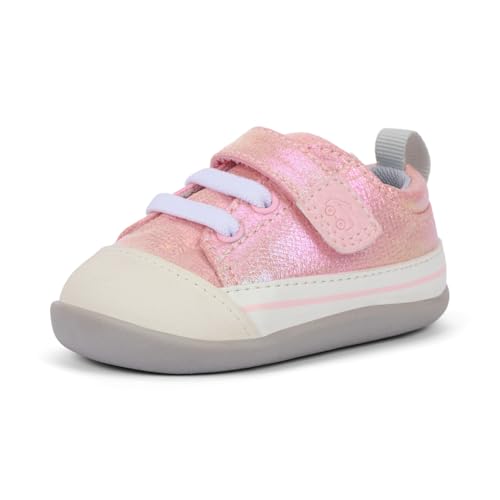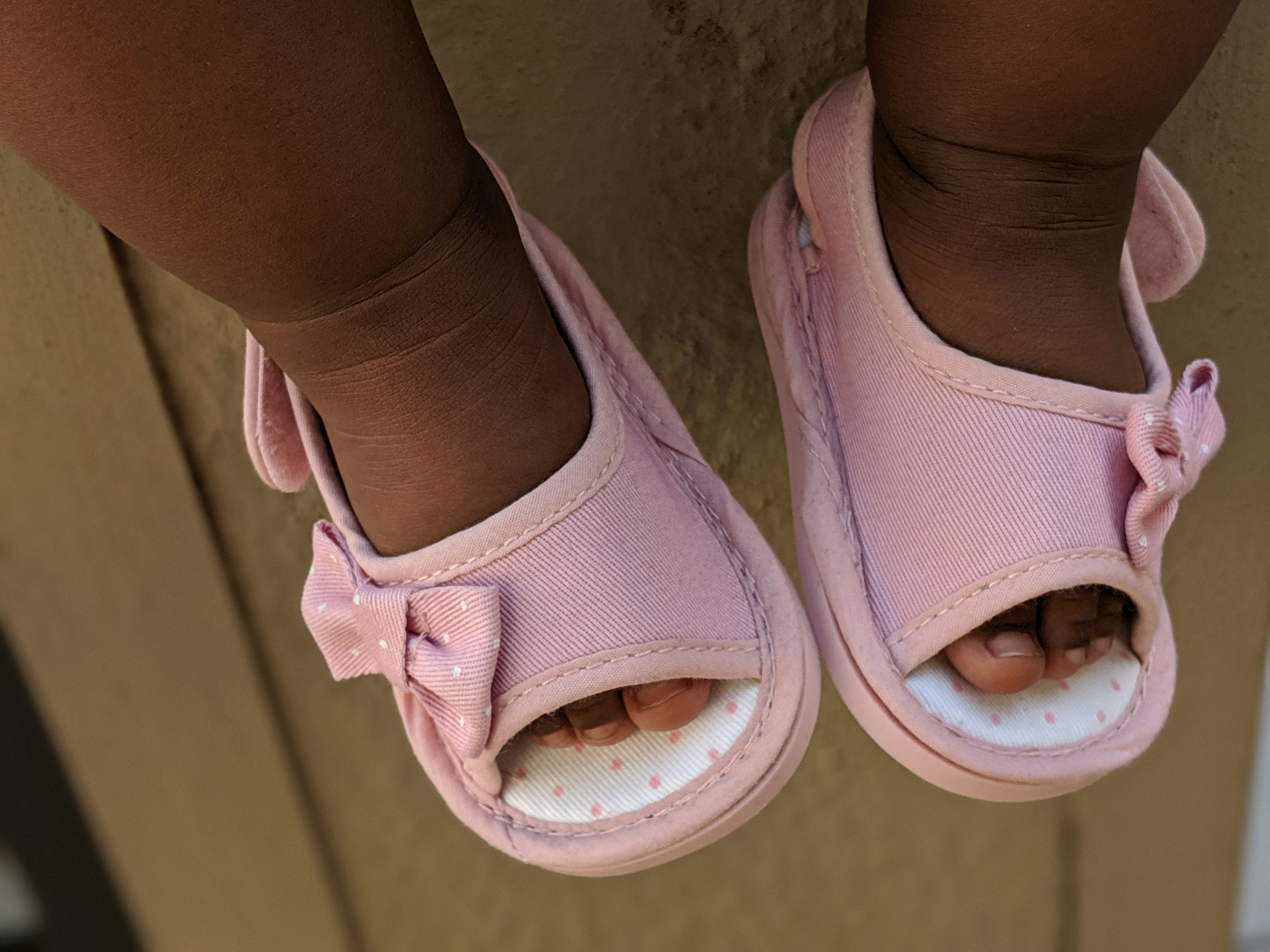Why Soft and Flexible Shoes Matter
Choosing the right footwear for babies taking their first steps is crucial to ensure proper foot development. Soft and flexible shoes play a significant role in supporting natural foot movement, which is vital during this formative stage. Unlike rigid shoes, soft options allow for the necessary bending and twisting that little feet require. Pediatric experts advocate for footwear that respects the anatomical structure of a baby’s foot, promoting flexibility that enables movement without undue restriction.
The structure of a baby’s feet is quite different from that of an adult. At this young stage, feet are primarily composed of soft cartilage rather than fully developed bones. This unique characteristic allows the feet to adapt and shape themselves as they grow. By opting for soft and flexible shoes, parents facilitate this natural development. Footwear that is too stiff can hinder a baby’s ability to sense their surroundings and adjust their movements accordingly, potentially leading to discomfort or even future musculoskeletal issues.
Moreover, allowing little feet the freedom to move naturally is essential for maintaining balance and coordination. Soft shoes provide a better connection between the foot and the ground, enabling babies to feel textures and surfaces, which enhances their spatial awareness and confidence while walking. Flexibility in footwear also supports a baby’s natural gait, creating a supportive environment for their developing muscles and tendons.
In summary, the significance of soft and flexible shoes for babies cannot be overstated. These shoes foster healthy foot growth by accommodating the natural movements essential during the early walking phase, thus ensuring that each step is a building block for future physical development. Prioritizing appropriate footwear like this will contribute positively to a child’s walking experience and overall health as they begin to explore the world around them.
Features of Ideal First-Walker Sneakers
Choosing the right first-walker sneakers is crucial for the healthy development of a child’s feet. An ideal pair of first-walker shoes should exhibit several key features that promote natural movement and safety for toddlers who are eager to explore their surroundings. One of the most important characteristics to look for is an ultra-flexible thin sole. These soles allow a child’s foot to move freely, mimicking the natural movement they would experience when walking barefoot. This flexibility is essential for developing balance and coordination as youngsters begin to experiment with their mobility.
Another significant feature to consider is adjustable fastenings. Sneakers equipped with Velcro straps or laces enable parents to achieve a snug yet comfortable fit. A properly fitted shoe ensures that the sneakers stay securely on the child’s feet during play, reducing the risk of tripping or slipping. Shoes that have adjustable features also allow for growth, accommodating a child’s rapidly changing foot size without sacrificing comfort or safety.
Reliability of traction is also a vital factor in first-walker sneakers. Shoes designed with non-slip rubber soles provide the necessary grip to help toddlers navigate both indoor and outdoor surfaces safely. Whether children are walking on smooth tiles or exploring grassy parks, reliable traction helps prevent slips and falls, giving parents peace of mind while their little ones engage in active play.
In conclusion, selecting first-walker sneakers that feature ultra-flexible soles, adjustable fastenings, and reliable traction plays an essential role in promoting comfort and safety. These features not only enhance the walking experience for toddlers but also support their physical development and confidence as they take their initial steps in the world.
Expert Recommendations on Baby Shoe Selection
When selecting footwear for infants, recommendations from pediatric experts emphasize the importance of appropriate shoe design to support natural foot development. Babies’ feet are not fully developed, and their footwear should facilitate growth rather than hinder it. Experts suggest looking for soft and flexible walker shoes that allow the foot to move naturally. Such shoes are designed to mimic barefoot conditions, promoting better balance and foot strength.
Materials play a crucial role in shoe selection. Shoes made from breathable fabrics, such as cotton or leather, help prevent excessive sweating and discomfort. Moreover, cushioning is key to providing protection without sacrificing flexibility. When assessing shoe construction, parents should ensure that the soles are lightweight and have a non-slip grip to enhance safety during early walking stages.
The fit of the shoes is paramount. Pediatric professionals recommend a thumb’s width of space between the longest toe and the shoe’s end to allow for growth. Additionally, parents should consider the width of the shoe; a secure fit around the heel and midfoot will prevent slipping while ensuring comfort. It is advisable to measure a baby’s feet regularly, as their feet tend to grow rapidly in the first few years.
Furthermore, pediatric experts advise against the use of heavy or rigid shoes, as these can restrict movement and impair a child’s ability to develop crucial motor skills. Instead, prioritize options that offer both protection and flexibility. Finally, encourage parents to allow their babies to occasionally walk barefoot in safe environments, as this promotes sensory development and strong muscle engagement. Selecting the right baby shoes can significantly impact a child’s early walking experience and overall foot health.
Choosing the Right Fit: A Guide for Parents
Selecting the proper fit for your baby’s walker shoes is essential for their comfort and foot health. Ill-fitting shoes can lead to discomfort and hinder their ability to walk correctly. To ensure an appropriate selection, parents should focus on three main factors: measuring foot size, understanding growth patterns, and knowing when to replace shoes.
To accurately measure your baby’s feet, start by using a soft measuring tape or a ruler. Place the baby’s heel against a wall, and measure the distance from the wall to the tip of the longest toe. It is advisable to measure both feet, as they may differ in size. Ensure to measure while your child is standing, as this will provide the most accurate representation of foot size. Always add an extra half inch to the measurement to accommodate for growth and to ensure the shoes are not too tight.
Understanding your child’s growth patterns is crucial. Babies typically grow out of their shoes every two to three months during their early years. Regularly checking for signs of tightness, such as footprints on the insole or difficulty in putting on shoes, can help you determine when it is time to replace them. Make it a habit to check your child’s shoes every few weeks, especially before significant milestones like walking.
Remember that the correct fit is paramount not just for comfort but also for promoting healthy foot development. Shoes that are too tight can cause problems such as blisters, and those that are too loose may not offer the necessary support. Focusing on these elements when selecting walker shoes for your baby will enhance their mobility journey and contribute positively to their overall foot health.



















Leave a Comment